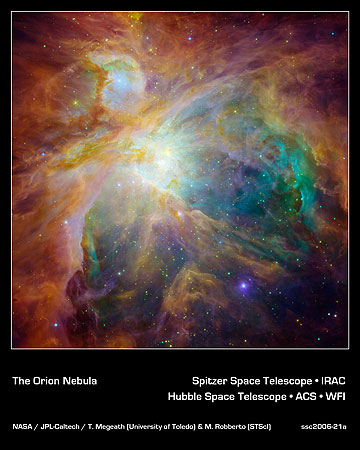Though I hadn’t planned another entry for today, this is just too beautiful to pass up. We’re looking at the Orion nebula (be sure to click the image to enlarge) in infrared, ultraviolet and visible light, a composite using both Hubble and Spitzer data that brings out unheard of detail — the green swirls are from Hubble’s ultraviolet and visible light detectors; the red and orange are Spitzer working in the infrared. This massive star formation region located in the sword of Orion is home to about 1000 young stars.
Note the set of stars called the Trapezium, identifiable as a bright area near the center of the image. Each of these massive stars pours out ultraviolet that heats hydrogen and sulphur in the nebula. The stellar wind from clusters of stars embedded in the dust and gas helped to create the distinctive shapes and swirls of this celestial artwork.



An amazing picture, universal art :)